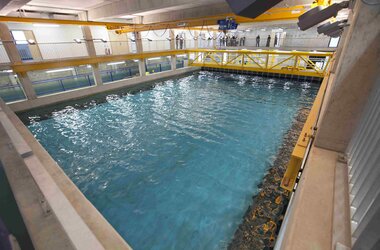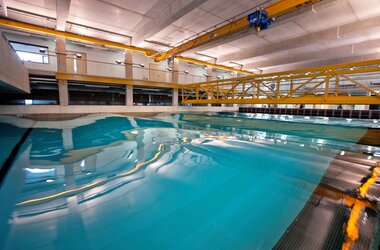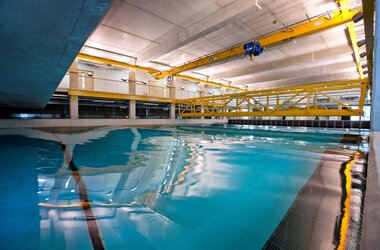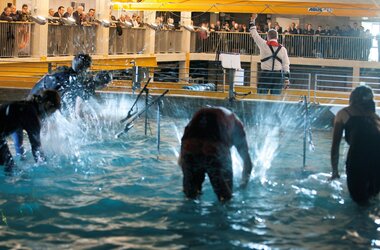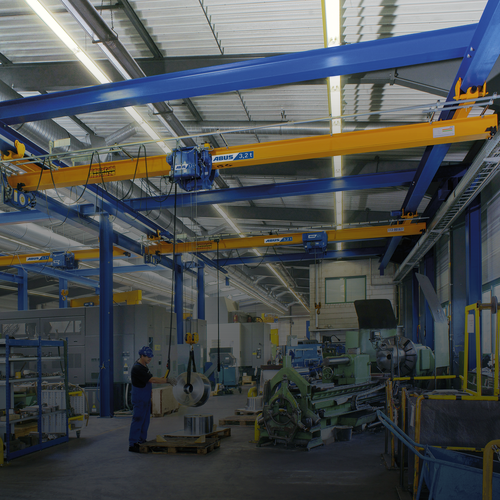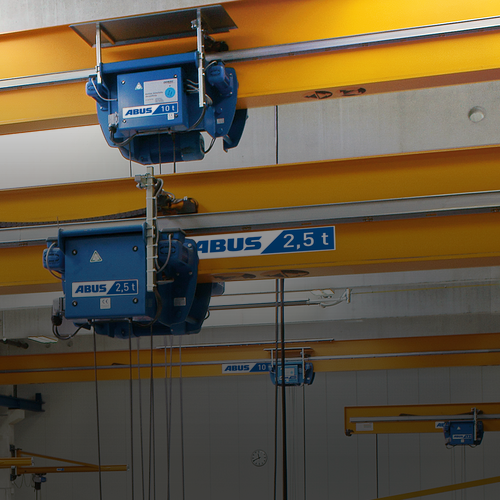ABUS crane installed within Plymouth University’s Marine Building
Plymouth in South West England has long been associated with the sea. In 1620 the Pilgrim Fathers left Plymouth for the New World, establishing a colony of the same name in what is now the USA. Plymouth now has ferry links to France and Spain and is home to the largest operational naval base in Western Europe.
Plymouth University reflects this marine heritage in its new Marine Building – a £19 million investment in research, teaching and training in maritime disciplines including oceanography, hydrography, marine biology and coastal ecology, as well as engineering, shipping, and professional development for the navigation industry.
Opened by the Duke of Edinburgh in October 2012, the facility contains the country’s most sophisticated wave tank testing facilities and above the 35 metre long Ocean Wave Basin tank, an ABUS overhead travelling crane has been supplied. The opening ceremony was a spectacular affair with a water drumming troupe performing for the royal guest, whose association with the sea as a naval officer in younger years is well known in the UK.
The Coastal Ocean and Sediment Transport (COaST) laboratory combines wave, current and wind power to create a dynamic ‘theatre’ appropriate for device and array integrity testing, environmental modelling and coastal engineering. The wave makers can generate short and long-crested waves in combination with currents at any direction in-line with or across the waves, sediment dynamics, tidal effects and wind.
was the ideal solution to lift devices into and subsequently out of the tank, enabling marine engineers and students to check their suitability in withstanding different conditions simulated by the wave, current and wind-generation technology. Thanks to a minimum side approach dimension and a crane track that is mounted directly on the builing’s ceiling, an efficient material handling solution in tight spaces with difficult design condions is possible with an underslung overhead travelling crane.
The crane was fitted with a radio remote control device to enable users to operate the crane whilst not having to stand beneath it, which in this case had obvious advantages. It works above a personnel gantry which also travels the length of the tank, and allows the engineers a close up view of the devices being tested.
The crane delivery and installation was undertaken by ABUS’ UK based subsidiary – ABUS Crane Systems Ltd. (www.abuscranes.co.uk). ABUS UK has also recently supplied a number of overhead cranes for university applications. Some are in prestigious, historic locations such as Cambridge University, but it is unlikely that many other cranes will receive such media and royal attention as the this one when it was put into service.

